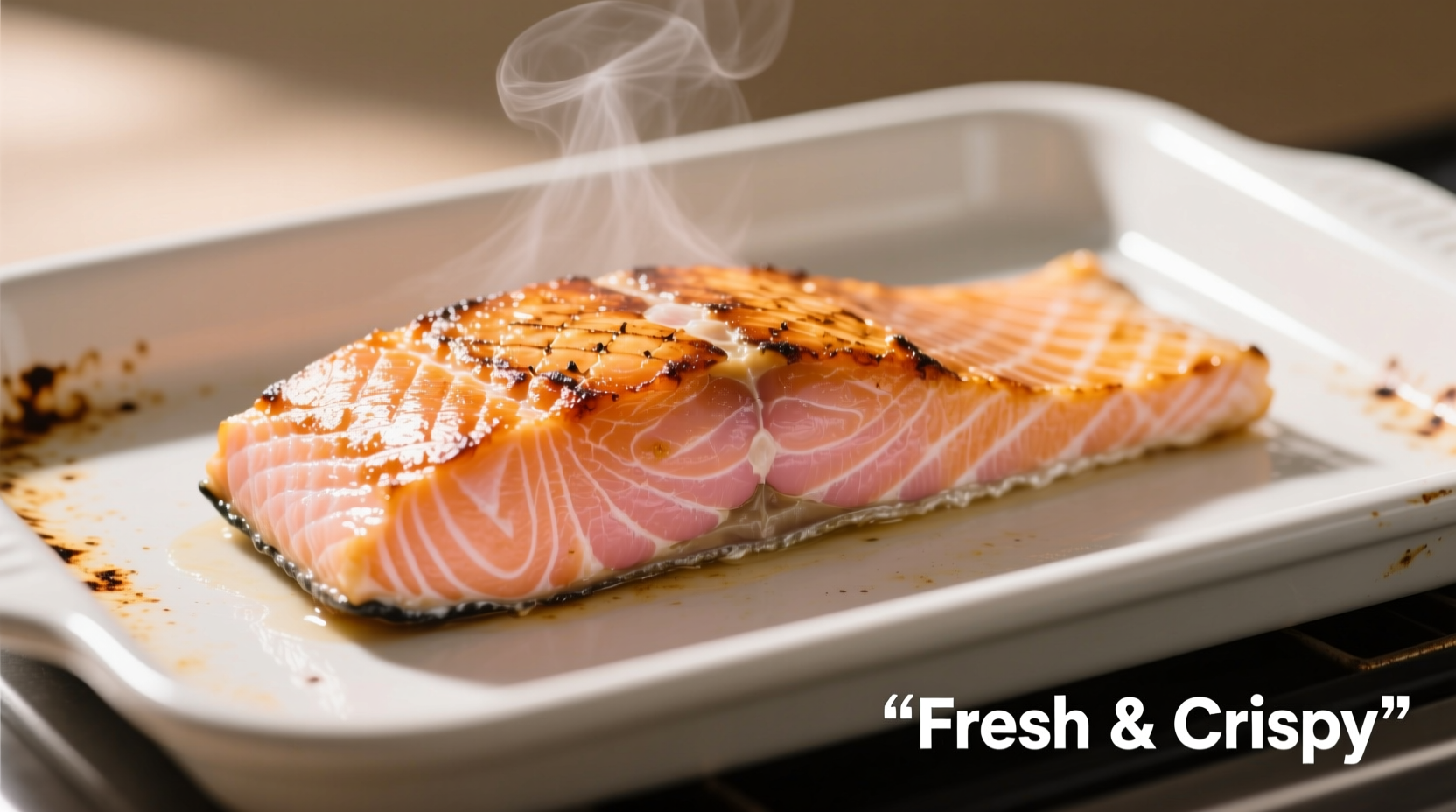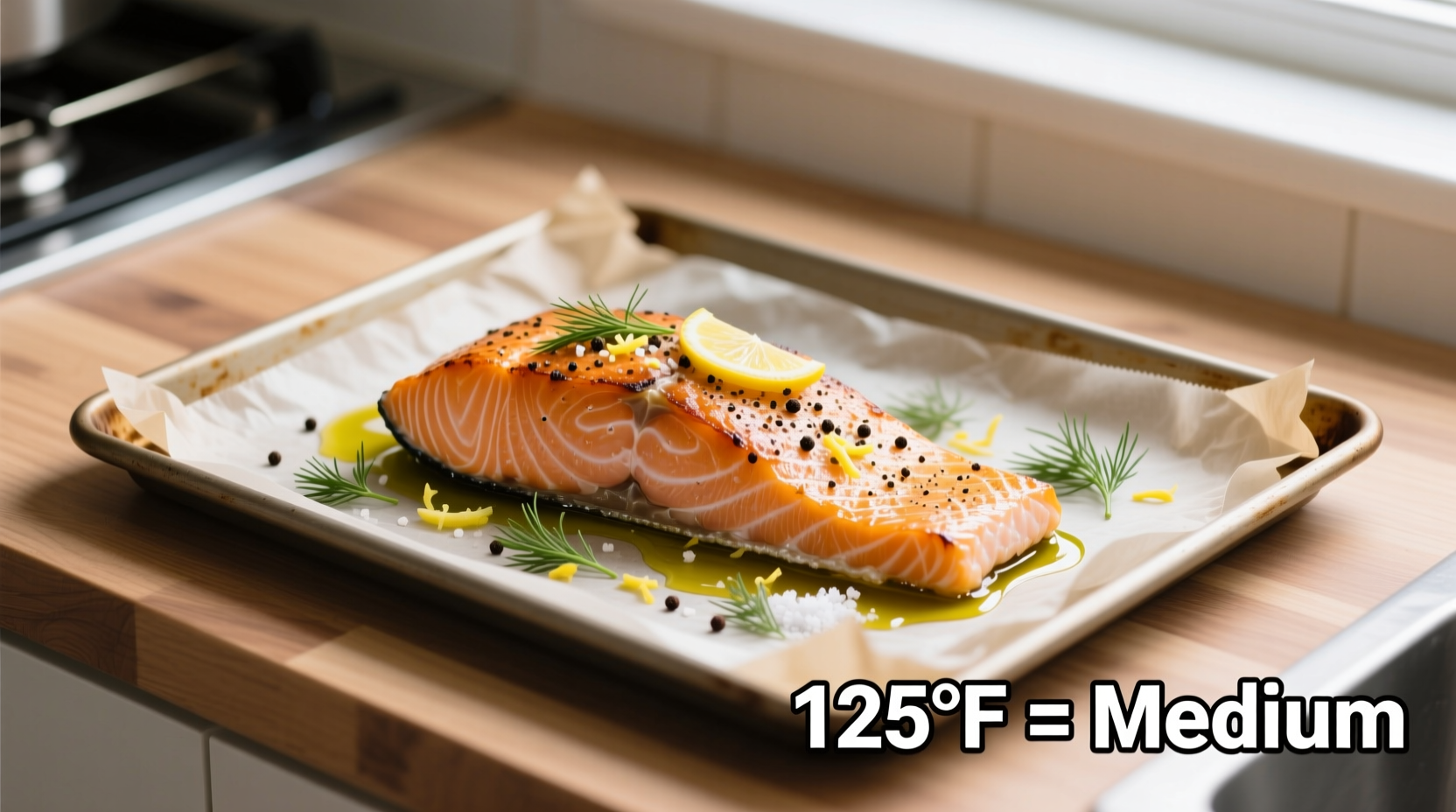The ideal oven temperature for cooking salmon is 400°F (204°C) for 12-15 minutes, yielding perfectly cooked fish with crispy skin and moist flesh. For food safety, salmon should reach an internal temperature of 145°F (63°C) at its thickest point, though many chefs prefer 125-130°F (52-54°C) for medium-rare texture.
Why Oven Temperature Matters for Perfect Salmon
Getting the oven temperature right transforms your salmon from dry and overcooked to restaurant-quality perfection. Unlike stovetop cooking where you can constantly monitor the process, oven cooking requires precise initial temperature settings because you can't easily check progress without opening the oven door and losing heat.
Professional kitchens consistently use 400°F as the sweet spot for oven-baked salmon. This temperature creates the ideal balance: hot enough to crisp the skin while gently cooking the delicate flesh without drying it out. Lower temperatures (325-350°F) risk overcooking before the skin crisps, while higher temperatures (425°F+) can cause the exterior to overcook before the center reaches your desired doneness.
Step-by-Step Preparation for Flawless Results
Before you even preheat your oven, proper preparation determines your salmon's success. Start with room-temperature salmon—take it out of the refrigerator 20 minutes before cooking. Cold fish from the fridge creates uneven cooking, with the exterior overcooking while the center remains underdone.
Dry the surface thoroughly with paper towels. Moisture is the enemy of crispy skin, so this simple step makes a dramatic difference. Season generously with salt (about ¼ teaspoon per pound) at least 10 minutes before cooking to allow penetration. Add pepper and other seasonings just before baking to prevent burning.

Temperature Options Compared: Which Is Right For You?
| Oven Temperature | Cooking Time (1-inch fillet) | Best For | Texture Result |
|---|---|---|---|
| 350°F (177°C) | 18-22 minutes | Whole salmon, stuffed fillets | Gentle, even cooking but less crispy skin |
| 400°F (204°C) | 12-15 minutes | Standard fillets, quick weeknight meals | Optimal balance: crispy skin, moist center |
| 425°F (218°C) | 10-12 minutes | Skin-on fillets, restaurant-style results | Extra-crispy skin, medium-rare center |
Timing Guidelines Based on Thickness
Thickness matters more than weight when determining cooking time. Use this simple rule: cook salmon for 8-10 minutes per inch of thickness measured at the thickest part. A standard 1-inch thick fillet needs 12-15 minutes at 400°F, but a thicker 1.5-inch cut requires 18-22 minutes.
For precision, insert an instant-read thermometer into the thickest part at a 45-degree angle, pointing toward the center. The FDA recommends cooking fish to 145°F (63°C) for food safety, but many professional chefs pull salmon at 125-130°F (52-54°C) since residual heat will continue cooking it during the 5-minute rest period. At 125°F, salmon is medium-rare with deep pink color and slightly translucent center; at 135°F, it's medium with opaque pink flesh.
Food Safety Note: According to the FDA Food Code, fish should reach 145°F internal temperature to eliminate potential pathogens. However, the USDA notes that fish cooked to 140°F with a 3-minute rest time also meets safety standards due to heat retention.
Doneness Indicators Beyond the Thermometer
While a thermometer provides the most accurate reading, visual cues help when you don't have one handy. Properly cooked salmon will flake easily with a fork but still maintain structure. The flesh changes from translucent red to opaque pink, starting from the bottom and moving upward.
Press the top gently with your finger—perfectly cooked salmon will feel slightly firm but still yield to pressure, similar to the fleshy part of your palm below your thumb when your hand is relaxed. Undercooked salmon feels soft and jelly-like, while overcooked fish becomes hard and dry, separating into large, dry flakes.
Resting and Serving for Maximum Flavor
Never skip the resting period! Transfer salmon to a warm plate and let it rest for 5 minutes before serving. This allows residual heat to distribute evenly through the fish (carryover cooking) and lets proteins relax, resulting in juicier texture. During this time, the internal temperature typically rises 5-10 degrees.
For best presentation, serve skin-side up to showcase that beautiful crispy texture. Pair with lemon wedges and fresh herbs like dill or parsley. If you've achieved proper oven temperature control, the skin should lift easily from the baking sheet with a thin spatula—no sticking indicates perfect cooking conditions.
Troubleshooting Common Salmon Problems
Problem: Salmon sticks to the pan
Solution: Ensure your baking sheet is properly prepared with parchment paper or a light coating of high-smoke point oil like avocado oil. The fish needs sufficient heat to create a natural release—if the oven isn't fully preheated, the proteins bond to the pan.
Problem: Dry, overcooked edges but raw center
Solution: This indicates uneven thickness. Next time, position thinner parts toward the center of the fillet or use the "fold technique"—fold thin tail ends under to create more uniform thickness before baking.
Problem: Pale, soggy skin
Solution: Increase oven temperature to 425°F and place the rack in the upper third of the oven. For extra crispiness, finish under the broiler for 1-2 minutes, watching carefully to prevent burning.











 浙公网安备
33010002000092号
浙公网安备
33010002000092号 浙B2-20120091-4
浙B2-20120091-4